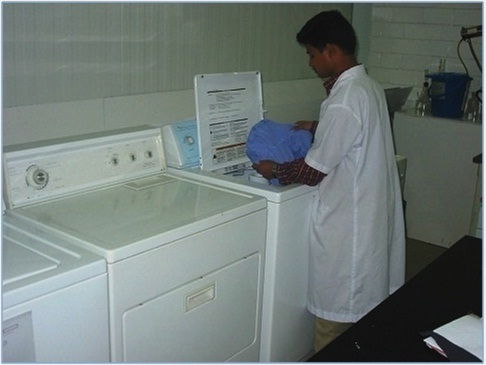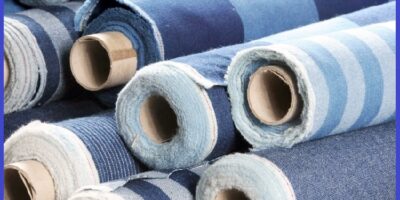There are some laundry symbols what we known as care symbols. Usually, those icons are written on labels, attach with the wearer to specify how an individual item should best be cleaned. There are some separate standards for care labels for the different countries or regions of the world to make easier its meaning. Generally, inside of the garment’s we may found a care label instruction, where exist some icon. Many of us do not clear what the meaning of those sign is. A merchandiser should have vast knowledge on those care label instruction. Besides this, if a customer knows this icon meaning well, he or she may be more careful during laundering their wearers. Here is a swift guideline to consumers for reading laundry icons. Your new beloved dress can be damaged if you do not know attach care instructions.
Aftercare requirements are an essential part of the utility value of textile items. If clothing demands challenging and expensive laundering, then we have to pay more attention. Aftercare may include airing, washing, bleaching, dry cleaning, drying (laid flat, hanging on a line, or in a tumble dryer) and ironing.
On the other hand, four factors are important in washing or dry cleaning i.e. time, temperature, detergent and mechanical action. These four factors have to be optimized for better cleaning.
Particular laundering procedures have to be chosen according to the type of fiber and its properties, such as strength and sensitivity to chemicals and temperature. Additional limitations may be imposed by yarn and fabric construction or unique finishes. Clothing with linings and interlinings, such as suits costumes, jackets, and overcoats, must usually be professionally cleaned.
Means of laundering tests can establish aftercare characteristics. We should obey following care instructions for light cleaning.
General recommendations:
(1) It would be better if we sort the items into groups according to washing machine temperature and light or dark colors.
(2) Follow the dosage of instructions before applying detergents.
(3) For the first time wash colored substances should be washed separately to avoid color drain.
(4) We should avoid bleach with colored detergents because it may expedite color bleeding.
(5) Pay more attention to the degree of soiling of the goods and the hardness of the water.
(6) Do not overload the washing machine.
(7) Wool garments can be machine-washed only if the label confirms it is safe to do so.
(8) Sensitive items should be turned inside- out or placed in a wash-bag to avoid fraying.
9) Sometimes dry clean is not allowed for particular wearer though it will make them fantastic but high temperature is worst for the substances, and it will shorten the tenure of your favorite dress. Try to avoid hot water and hot dryer if possible.
The International Association for Textile Care Labeling (GINETEX) compiled some sign for care labeling system in 1975.
These codes are the ones used by many clothing producers and the ones you are most likely to encounter. Please find below some important care label instructions with relevant symbols for your easy understanding. The method consists of five basic icons, and their full explanations are exposed in the following.
Note: A cross on any icon means that the action shall not be used or prohibited during washing and a bar under the icons signifies milder action is needed (broken bar indicates a very mild effect).
Washing
![]() Bucket icons are specified for fabric washing. This symbol indicates that hand or machine wash is acceptable. The maximum temperature in the tub is showing by a number. A line below the tub represents gentle wash. A double line below the tub means especially gentle wash for delicate fibers, for example woolen dress.
Bucket icons are specified for fabric washing. This symbol indicates that hand or machine wash is acceptable. The maximum temperature in the tub is showing by a number. A line below the tub represents gentle wash. A double line below the tub means especially gentle wash for delicate fibers, for example woolen dress.
Wash bucket is used to specify this icon and the number of dots inside the bucket shows the highest temperature you can safely use to wash your items. Sometimes actual temperature (in centigrade) will be written instead of dots, sometimes not.
Standard (built) detergents include water-softening, bleaching and optical brightening agents, anti-re-deposition agents and fillers.
Gentle detergents are used for wool, silk, and other sensitive fabrics. They are active at low temperature, have low alkaline and do not contain bleaching or optical brightening agents.
Compact detergents contain no fillers and are active at low temperatures. This saves energy and reduces environmental impact.
| |
Some washing icons also used for additional indication:
Bleaching
Triangle symbol indicates whether a bleaching agent may be utilized for brightening and stain removal. An empty triangle means that any bleaching agent can be used i.e. Chlorine or oxygen bleach. Whether you can safe and sound use bleach on the item will be indicated by a triangle, according to the following code:
Triangle symbol indicates whether a bleaching agent may be utilized for brightening and stain removal. An empty triangle means that any bleaching agent can be used, i.e. chlorine or oxygen bleach.
Machine Dry
![]() The dryer is represented by a square with a ring inside of it. The number of dots inside of the square box indicates the temperature intensity which it is safe to dry your clothing item. Just as with washing, you can always dry at a lower temperature and air drying is always an option over machine drying. The divisions are similar to those for washing and ironing. The symbol gives no information about shrinkage in the tumble dryer.
The dryer is represented by a square with a ring inside of it. The number of dots inside of the square box indicates the temperature intensity which it is safe to dry your clothing item. Just as with washing, you can always dry at a lower temperature and air drying is always an option over machine drying. The divisions are similar to those for washing and ironing. The symbol gives no information about shrinkage in the tumble dryer.
Besides this, you may found the following laundry icons on your clothing care:
Natural drying: symbol of square, recommendations for natural drying may be given in written or symbol form. These symbols are displayed below the five main symbols.
Ironing
![]() Iron symbol is used to specify this icon and the number of dots inside the iron indicates the highest temperature you can safely use to iron your items. Nowadays many iron manufacturers use these icons at control dial panel to easier your job.
Iron symbol is used to specify this icon and the number of dots inside the iron indicates the highest temperature you can safely use to iron your items. Nowadays many iron manufacturers use these icons at control dial panel to easier your job.
 No Steam: Do not use steam while do ironing. No Steam: Do not use steam while do ironing. |
Professional Dry-cleaning
![]() Some icons are preserved to express professional dry clean. Symbol of a circle, the circle indicates recommendations for professional cleaning. The letters show acceptable cleaning and stain removal solvents. A line of the circle means a gentle process (reductions in mechanical action). A double line indicates exceptionally gentle treatment.
Some icons are preserved to express professional dry clean. Symbol of a circle, the circle indicates recommendations for professional cleaning. The letters show acceptable cleaning and stain removal solvents. A line of the circle means a gentle process (reductions in mechanical action). A double line indicates exceptionally gentle treatment.
 Very gentle cleaning with hydrocarbon solvents Very gentle cleaning with hydrocarbon solvents |
 Very gentle cleaning with PCE Very gentle cleaning with PCE |
Wet-cleaning
Please find some symbols of wet-cleaning.
 Professional wet cleaning Professional wet cleaning |
 Very gentle wet cleaning Very gentle wet cleaning |
 Professional wet cleaning is not allowed Professional wet cleaning is not allowed |
Even though there is a global standard that has been fixed by the ISO and the EU, copyright laws compose it elaborates to publish these widely. However, I tried to compile the leading national and global Textile Care Labeling symbols by above articles. I think you may get a rough idea to take extra care while washing your beloved wearers.
You may like: SOP of Washing Operator




